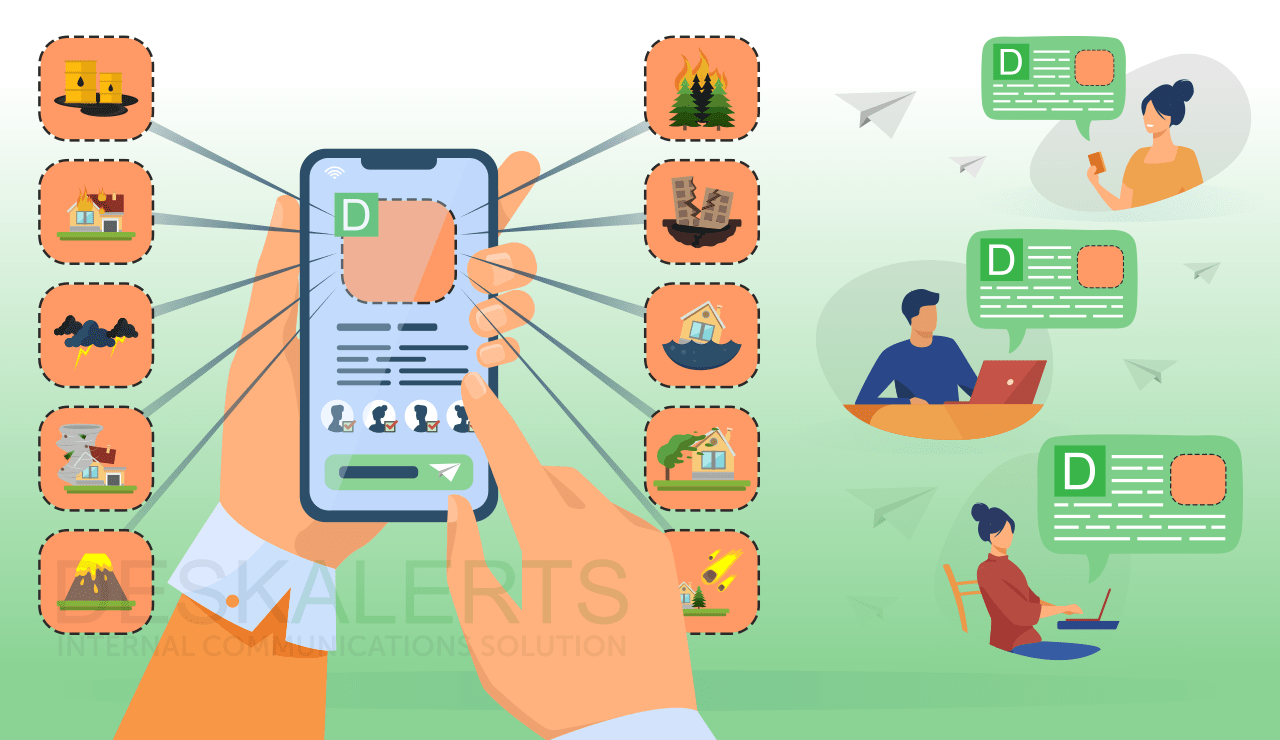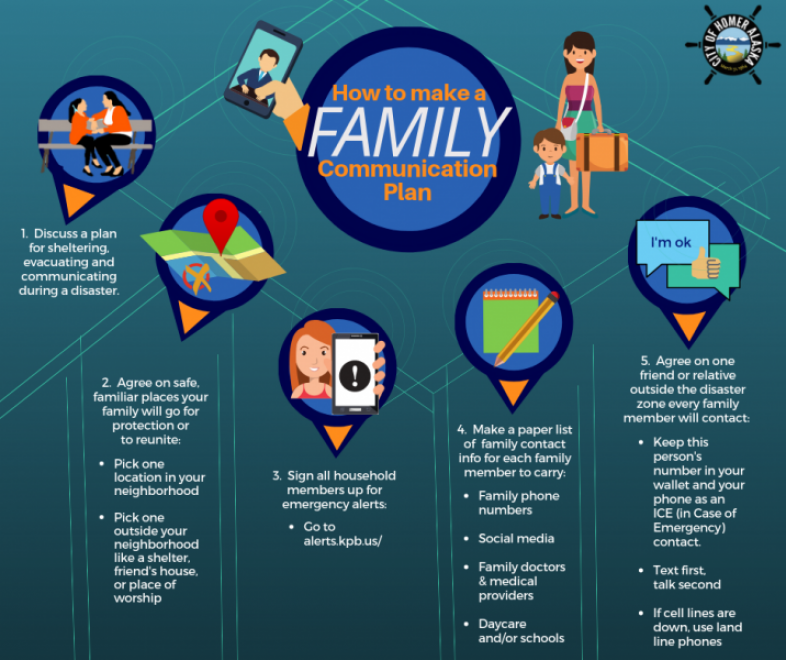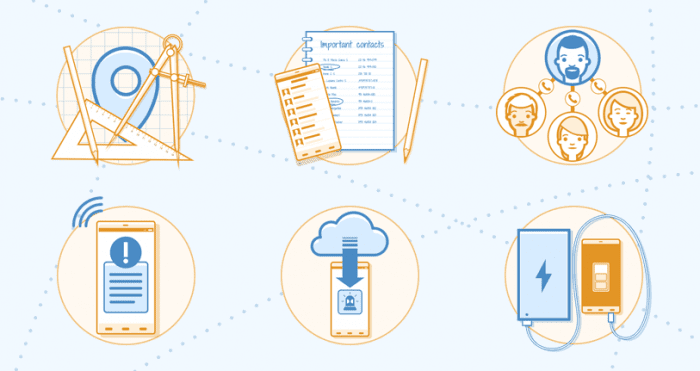Introduction
In times of crisis and disaster, communication is crucial. It can mean the difference between life and death, getting help, or being stranded. With the rise of technology and new communication channels, there are now more ways than ever to stay connected during emergencies. However, with so many options available, it can be overwhelming to know which is the best way to communicate during a disaster. In this blog post, we will explore various communication methods and strategies to help you stay informed and connected during a crisis.
During a disaster, it is important to have a way to communicate with your loved ones. There are many ways to communicate, but some are more effective than others. Here are some tips for how to communicate during a disaster.
- Use a landline if possible. Landlines are not affected by power outages, so you will be able to make and receive calls even if there is no electricity.
- Send text messages instead of making phone calls. Text messages can often go through even when phone calls cannot.
- Use social media to keep in touch with your loved ones. Sites like Facebook and Twitter can be useful for sending updates and checking in on people during a disaster.
- Have a plan. Make sure everyone in your family knows how to reach each other and has an emergency contact list ready to go in case of an emergency.

The Best Ways to Communicate During a Disaster
During a disaster, it is important to have a plan for how you will communicate with your family and friends. With cell phone towers down and power outages common, you may not be able to rely on your phone. text messages, social media, and email may also be unreliable.
There are a few ways to ensure that you can reach your loved ones during an emergency:
- Make sure everyone in your family or group has each other’s contact information saved in their phones under “In Case of Emergency” (ICE). This will help first responders reach your loved ones if you are injured or unable to communicate.
- Choose one out-of-state friend or relative who can be your “ check-in” person. Everyone in your group should call or text this person to let them know they are safe after a disaster strikes. This person can then relay information to other friends and family members who are worried about you.
- Keep a list of emergency contacts handy, either on your phone or written down somewhere safe. This should include the phone numbers for your local police and fire departments, as well as the number for your insurance company.
Two-Way Communication – Sending and Receiving Information
In our fast-paced world of constant communication, it’s important to understand the different ways we can send and receive information. Two-way communication is a vital aspect of modern life, and there are numerous technologies that allow us to stay connected with others in real-time. In this section, we’ll explore some of the most popular ways of sending and receiving information, including landline telephones, cellular phones, satellite phones, and Voice over Internet Protocol (VoIP).
Landline Telephones
Landline telephones are the traditional wired phones that have been around for over a century. They require a physical connection to a telephone line in order to make and receive calls. Landlines offer clear voice quality and are generally reliable, as long as the phone lines are well-maintained. They are also more secure than wireless phones, as it is more difficult to intercept a wired phone call.
However, landlines also have some drawbacks. They are not portable, so you can only make calls from the location where the phone is installed. They also require a physical connection, which can be an inconvenience if you’re moving around or trying to make a call from a public place.
Cellular Phones
Cellular phones, also known as mobile phones or cell phones, are wireless phones that use radio frequencies to communicate with cell towers. The signals are then transmitted to other cell towers and eventually to the recipient’s phone. Cellular phones offer the advantage of portability, meaning you can make and receive calls from anywhere within the range of a cell tower. They also offer other features such as text messaging, internet connectivity, and access to various apps.
However, cellular phones are more susceptible to interference and poor signal quality in areas with weak cell coverage. They also require a battery, which can run out of power at inconvenient times. Security can also be an issue, as cellular signals can be intercepted by unauthorized parties.
Satellite Phones
Satellite phones are a type of mobile phone that use satellites in orbit around the earth to communicate with other satellite phones or ground stations. These phones are often used in remote areas where there is no cell coverage, such as in the wilderness or at sea. Satellite phones provide reliable communication in places where other phones can’t, and they offer global coverage.
However, satellite phones are expensive to purchase and use, and they require a clear view of the sky in order to function properly. They are also larger and heavier than other types of phones, making them less convenient to carry around.
Voice over Internet Protocol (VoIP)
Voice over Internet Protocol (VoIP) is a technology that allows you to make phone calls over the Internet. This can be done through a computer, a special VoIP phone, or a smartphone app. VoIP offers many advantages over traditional phone systems, including lower costs, greater flexibility, and advanced features such as video calling.
However, VoIP requires a reliable and fast internet connection in order to function properly. Quality can also be affected by network congestion or other internet-related issues. VoIP is also more vulnerable to security threats such as hacking and viruses.
Two-Way Radios
When it comes to staying connected, there are many options available, but two-way radios are an ideal choice for a wide range of scenarios. Two-way radios are versatile, portable, and easy to use. They are a great tool for communication in a variety of settings, including outdoor activities, events, and emergencies. In this section, we will discuss the different types of two-way radios available, including Family Radio Service (FRS), General Mobile Radio Service (GMRS), Citizen Band Radio (CB), and Amateur Radio.
Family Radio Service (FRS)
Family Radio Service (FRS) radios are the most commonly used two-way radios for personal use. They are affordable, compact, and easy to use. FRS radios operate on frequencies from 462.5625 MHz to 467.7125 MHz, with up to 22 channels available. They have a range of up to two miles in optimal conditions, which makes them suitable for use in parks, campgrounds, and other outdoor activities.
General Mobile Radio Service (GMRS)
General Mobile Radio Service (GMRS) radios are similar to FRS radios, but they operate on higher frequencies and have more channels available. GMRS radios require a license from the Federal Communications Commission (FCC), which is easy to obtain. GMRS radios have a range of up to five miles in optimal conditions, which makes them suitable for outdoor activities, hunting, and emergency situations.
Citizen Band Radio (CB)
Citizen Band Radio (CB) is a popular two-way radio system that operates on 40 channels within the 27 MHz band. CB radios are commonly used by truckers, off-road enthusiasts, and hobbyists. They have a range of up to 20 miles in optimal conditions, but the range can vary depending on the terrain and other factors. CB radios are easy to use and affordable, making them a great choice for personal use.
Amateur Radio
Amateur Radio, also known as ham radio, is an advanced two-way radio system that requires a license from the FCC. It is designed for personal communication and experimentation. Amateur radio operators can communicate with other operators locally or around the world using a variety of frequencies and modes. Amateur radio is a great hobby for those interested in electronics and communication, and it can be used for emergency communication in times of disaster.

The Different Types of Disasters
There are many different types of disasters that can occur. Some are natural disasters, such as hurricanes, floods, and earthquakes. Others are man-made, such as oil spills and chemical accidents. And still, others are caused by terrorism, such as the September 11th attacks.
Each type of disaster requires different communication techniques. For example, during a hurricane, it is important to have a way to communicate with loved ones who are in the path of the storm. During a chemical accident, it is important to have a way to warn people in the area of the danger. And during a terrorist attack, it is important to have a way to let people know that they are safe.
The best way to communicate during a disaster depends on the type of disaster that is occurring. Natural disasters often require short-term communication solutions, such as two-way radios and satellite phones. Man-made disasters often require long-term communication solutions, such as landlines and cell phones. And terrorist attacks often require both short-term and long-term communication solutions.
No matter what type of disaster is occurring, it is important to have a plan in place for how you will communicate with your loved ones. By being prepared ahead of time, you can ensure that everyone stays safe and knows what to do in case of an emergency.
The Importance of Communication During a Disaster

In emergency situations, communication is essential. It can mean the difference between life and death. That’s why it’s important to have a plan in place so you can stay in touch with your loved ones during a disaster.
There are a few different ways to communicate during a disaster. One is to use a ham radio. This is a type of radio that doesn’t rely on cell towers or the internet, so it’s still possible to use it when other methods are down.
Another way to communicate during a disaster is to use a satellite phone. These phones work by connecting to satellites instead of cell towers, so they can be used in areas where there is no cell service.
Another option is to use voice over IP (VoIP) services like Skype or Google Voice. These services allow you to make calls over the internet, so they can be used even when there is no cell service or landline service.
Finally, you can always send text messages. Even if cell service is down, text messages can often still get through. This is because text messages are sent using a different network than voice calls.
No matter which method you use, the important thing is that you have a plan in place so you can stay in touch with your loved ones during a disaster.
Conclusion
There are a variety of ways to communicate during a disaster, and the best method will vary depending on the situation. If you need to reach a large number of people quickly, mass notification systems such as text messaging, email, and social media can be effective. For smaller groups or one-on-one communication, phone calls or face-to-face conversation may be best. In any case, it is important to have a plan in place so that you can stay in touch with your loved ones and get the information you need during an emergency.
If you cannot find an answer on our website to your question, feel free to message or call us!
